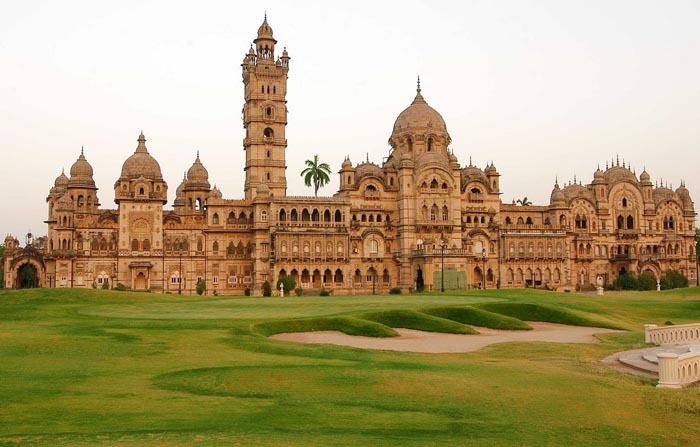Laxmi Vilas Palace

Information on Laxmi Vilas Palace (Vadodara, Gujarat) - History & Architecture
Laxmi villas palace, the glorious residence was built in the year 1890, by Maharaja Sayajirao III. The chief architect was Major Charles Mant. Until the year 1960 the family still occupied the old Nazabaug palace, a huge edifice with an encrustation of porch and the kiosks on the top which the French travelers, Rousselet, found it very alarming. The accumulation of the building, planted on the apex of construction was approximately of wood, whose base were saturated in the soggy soil, betokened great bravery on the component of the architect, and still more poise on that of the King.
The architecture of the palace has Indo-Sarcenic style. The palace is the largest and the private residence of the world. It was once the home for the Gaekwad rulers of Baroda. The expenditure for the entire building was 60 lakh in the 19 the 19th century.
Laxmi Vilas Palace Architecture
The palace has the incredible fusion of bangaldar attic, chhatris, a lofty tower and vital cupola. Creating a contemporary palace, Mant retained the conventional division of an Indian palace interested in three sections however arrayed in three blocks alongside the main alliance of the building. The Durbar Hall is at the left, dwelling of Maharaja in the heart and the Zenana at the right.
Hence the palace is encompassed with multi-coloured marbles, tiles, furnishing, luxurious design and a variety of work of fine art. The arched doorway of the palm courtyard and the fountain is remarkable. The Darbar Hall, in the left, presents prnate Italian variety base. In the earlier days the hall was used to be the venue of music performance and the artistic events. The Darbar has the striking glass skylight. The fortification of the hall exhibits mosaic decoration. The palace has a tremendous collection of the ancient armors and sculpture and the breakables made to tarracotta, marble and bronze.
The palace land encloses many buildings inside its premises which include a golf course and Maharaja's Sayaji Roa private museum, Fateh Singh Museum. The museum has the displays, the showcase paintings by the imperial painter. The museum palace has a range of art works and articles belonging to the royal family.
Laxmi Vilas Palace History
Immense structure was built for the Gaekwar Sayaji Roa 3 in 1875-1939 and was regarded as the apparently the most costly building erected by a classified individual in the 19th century. It has an outlook garden in the forefront. The palace was initially designed by Major Charles in the Indo-Sascenic architectural technique. The construction began in the year 1878 and was done after his bereavement in 1890 by Robert Fellowes Chisholm in 1840-1915. The architects were found of Orientalist style, which was the arrangement of the eastern and western form, mainly with arches and domes.
Laxmi Vilas Palace Tourism Importance
The beauty of the Palace is worth to see and enjoy as it has lot to depict of the glorious and enriching lifestyle of the Maharajas. The splendid architectural beauty and the artifacts that are incorporate within the villa are antique to the present day and worth to relish, while on a visit. The palace also has other buildings to be found near the palace, the Motibagh place and the golf course. There is also a zoo, which is occupied by the number of crocodiles and peacocks. Thus having a beauty that once was part of the glorious history is worth to visit and to soak and feel the time of the era that once lived within the walls of Laxmi Vilas Palace.
- Andaman Nicobar Monuments
- Andhra Pradesh Monuments
- Assam Monuments
- Bihar Monuments
- Chhattisgarh Monuments
- New Delhi Monuments
- Goa Monuments
- Gujarat Monuments
- Haryana Monuments
- Himachal Pradesh Monuments
- Jammu and Kashmir Monuments
- Karnataka Monuments
- Kerala Monuments
- Madhya Pradesh Monuments
- Maharashtra Monuments
- Odisha Monuments
- Punjab Monuments
- Rajasthan Monuments
- Tamil Nadu Monuments
- Telangana Monuments
- Uttar Pradesh Monuments
- West Bengal Monuments